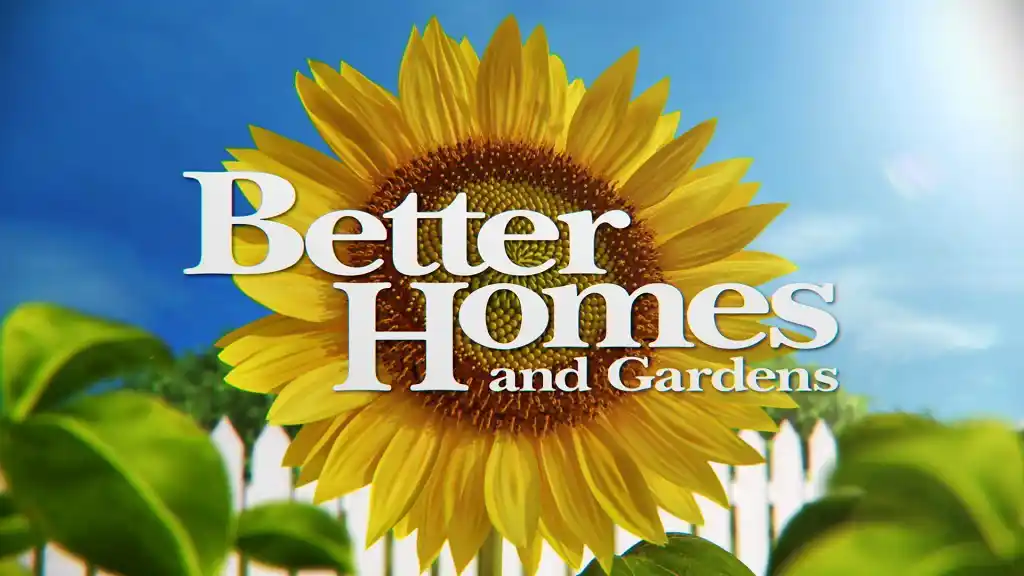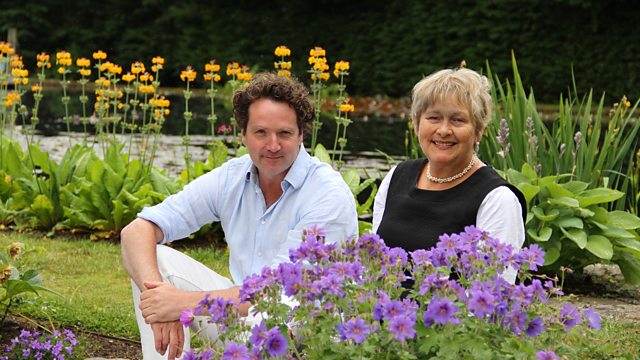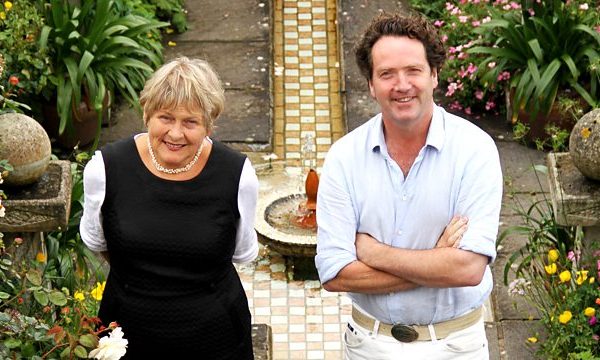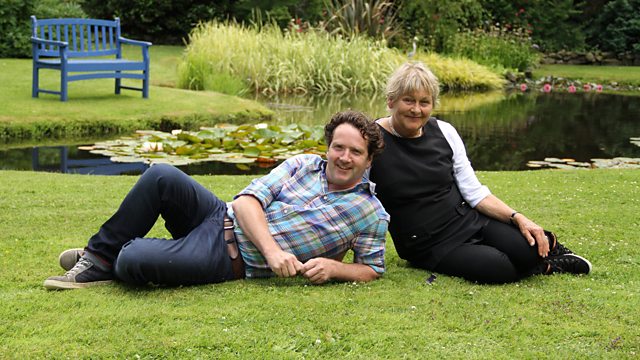Better Homes and Gardens episode 26 2023 – Johanna Griggs, host of Better Homes and Gardens, catches up with Simmone Logue, an interior designer and stylist, for an exclusive tour of Logue’s beautifully decorated country homestead and garden. Logue, known for her relaxed yet elegant style, gives Griggs a personal walkthrough of the spacious interiors, pointing out unique antique furnishings, cozy textiles and charming decorative accents that create her signature look.
The two sit down in Logue’s rustic kitchen where she demonstrates preparing some of her favorite hearty, wholesome country recipes. Logue shares clever tips and tricks as she cooks up a spread of delicious comfort foods, including golden chicken pot pies, fresh biscuits with homemade jam, and a slice of sweet apple crumble, all while the two friends chat and laugh.
Meanwhile, Fast Ed Halmagyi meets up with Joh at a local market where they browse fresh ingredients for an easy midweek meal. Ed whips up his quick and tasty take on bulgogi beef buns, a Korean-inspired sandwich packed with seasoned, marinated beef, fresh veggies and zingy sauces in a soft bun. Ed and Joh discuss fun variations on the versatile dish.
Finally, Graham Ross takes a peaceful stroll through the stunning National Arboretum in Canberra, home to an extensive collection of trees from around Australia and the world. Graham explores winding pathways past unique gardens showcasing fascinating and rare trees. He highlights beautiful blooming florals and towering varieties ahead of National Tree Day, an annual event that raises awareness of the importance of trees and nature.
Better Homes and Gardens episode 26 2023
How to make a cheap garden path
Side paths are often seen as merely utilitarian – a way to get from the front to the back of a house. However, they can be so much more than that! With some thoughtful design, a drab side path can be transformed into an inviting garden stroll.
In this project, Charlie will be renovating a tired old straight path with a more organic, meandering design. This will make the journey from front to back more interesting and pleasant. The new path will be surrounded by lush plantings on both sides, creating a verdant oasis to traverse.
To give the new garden path an established, mature look right away, Charlie plans to incorporate existing hardscape materials found around the house. Using recycled bricks, pavers, gravel, and stones is not only environmentally friendly, but also helps keep costs down. The aged, weathered materials will lend a timeworn patina that would take years to cultivate with new materials.
With a bit of creativity and reuse, an oft-overlooked side path can be turned into a secret garden gem. The tranquil, enveloping plantings will make even a short stroll seem like a getaway from the world. This oasis will become a destination in itself rather than merely a means to get somewhere else.
Adam shows you how to make a Scandi-style coffee table
A classy coffee table is an essential piece of furniture for any stylish living room. Not only does it provide a convenient surface for placing drinks, remotes, books and more, but it also serves as a chic focal point that brings the whole space together. This DIY scandi-style coffee table from Adam is an excellent option for those looking to add refined style on a budget.
The clean lines and light wood finish of this table embody the essence of Scandinavian design. Simple yet elegant. Understated yet striking. The smooth rectangular tabletop provides ample space for hosting guests or displaying decor, while the sleek tapered legs give it a refined, minimalist look.
But this table doesn’t just offer good looks – it also features clever hidden storage. The top lifts up to reveal two spacious drawers, perfect for tucking away clutter and keeping your magazines, coasters, blankets and more organized and out of sight. No more messy pile-ups on the coffee table!
Constructing this handy furniture piece is made easy thanks to Adam’s straightforward tutorial. He outlines all the affordable materials needed, walks through each step of the build process in detail, and provides helpful tips and tricks along the way. Even amateur DIYers can feel confident taking on this project and ending up with a gorgeous, custom coffee table.
No matter your decor style – modern, traditional, rustic or eclectic – this adaptable design would make a fantastic addition to your living room. The neutral wood tone allows it to blend seamlessly into any color palette and aesthetic. So why waste money on boring mass-produced furniture? Build your own one-of-a-kind coffee table with Adam’s video guide and enjoy the satisfaction of creating something stylish and practical for your home.
How to grow waratahs – The Complete Guide to Growing Stunning Waratahs
Waratahs are one of the most iconic and beautiful Australian native flowers. With their large, bright red flower heads, waratahs are eye-catching additions to any garden. Though they have a reputation for being tricky to grow, with the right care waratahs can thrive. Here is a complete guide to successfully growing magnificent waratahs.
Choosing the Right Waratah Variety
There are several stunning waratah varieties to choose from:
– Telopea speciosissima – The New South Wales waratah is the most widely recognized with its large, bright red flower heads. There are also creamy yellow and pink varieties.
– Waratah hybrids – Hybrid waratah varieties like ‘Shady Lady’ and ‘Brimstone Starfire’ can be easier to grow and offer different flower colors like red, pink, yellow, and orange.
– Tasmanian waratah – Smaller in size than the NSW waratah but still beautiful with prolific red flowers.
– Bushy waratah – A small, bushy waratah native to Victoria with vibrant red flowers. Grows to around 1.5m tall.
Consider the mature size, climate needs, and flower color when selecting waratahs. Hybrids offer the widest range of flower colors.
Providing the Right Growing Conditions
Though adaptable, waratahs thrive when provided the following growing conditions:
– Sunlight – Waratahs grow best in full sun to part shade. Protect from hot afternoon sun.
– Soil – Well-draining, slightly acidic soil is ideal. Improve drainage in heavy clay soils by building raised garden beds.
– Water – Soak the soil deeply 2-3 times per week in summer, allowing it to dry out between waterings. Reduce water in winter.
– Fertilizer – Use a balanced organic fertilizer or low phosphorus native plant fertilizer in spring and summer.
– Temperature – Protect new plants from frost until established. Mature plants tolerate light frosts.
– Wind protection – Shield waratahs from strong winds which can damage the flower heads.
Recreating their natural habitat helps waratahs thrive. Grow in part shade with organically enriched, well-drained soil.
Planting Waratahs
Follow these tips when planting waratahs:
– Prepare the planting area well by digging in organic matter like compost to improve drainage.
– Space multiple plants 1-2 meters apart depending on variety. Waratahs have spreading root systems.
– Dig a hole the same depth as the pot and twice as wide. Place the plant in the hole and backfill with native soil.
– Water deeply after planting and apply organic mulch around the base to retain moisture.
– Stake tall varieties while young to provide support and prevent damage from wind.
Allow enough room between waratahs for them to reach their mature sizes. Enrich the soil and water thoroughly after planting.
Ongoing Waratah Care
With proper care, waratahs thrive:
– Watering – Water thoroughly in summer during growth and flowering. Reduce water in winter.
– Fertilizing – Use low phosphorus fertilizer or organic options in spring and summer. Avoid high nitrogen fertilizers.
– Pruning – Prune lightly after flowering by removing old flowering stems. Renew plants by cutting back older plants.
– Pest control – Watch for leaf eating insects like cockchafers. Use organic pest control methods if needed.
– Propagation – Propagate from cuttings or by layering in spring. Hybrids must be grown from cuttings.
Attend to watering and fertilizing needs during the growing season. Prune after flowering and control any pests. With attentive care, waratahs reward gardeners with their spectacular blooms year after year.
Troubleshooting Common Waratah Problems
Follow these tips to prevent common waratah issues:
– Rotting – Improve drainage and avoid overwatering to prevent stem and root rot.
– Small flowers – Encourage larger blooms with regular watering and fertilizing during flowering.
– Leaf damage – Shield plants from harsh sun and wind. Control leaf-eating pests.
– No flowers – Can indicate over-pruning. Allow plants to grow unpruned for a season.
– Leggy growth – Give plants full sun exposure and prune regularly to encourage bushy growth.
With proper site selection, planting, and care waratahs can thrive in gardens across Australia. Their bright crimson flower heads will stop visitors in their tracks when waratahs are grown to their full potential.




